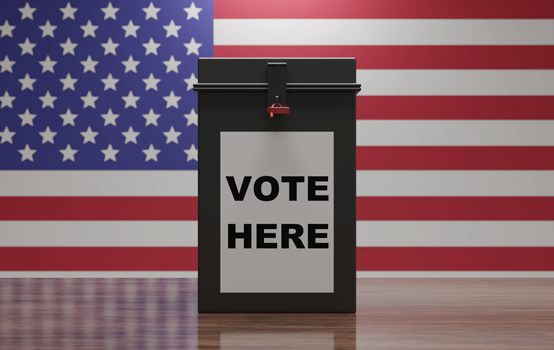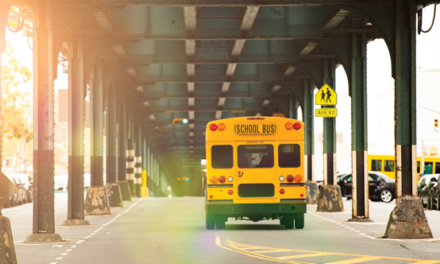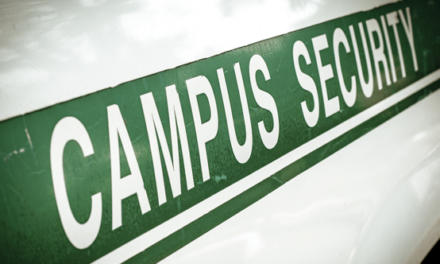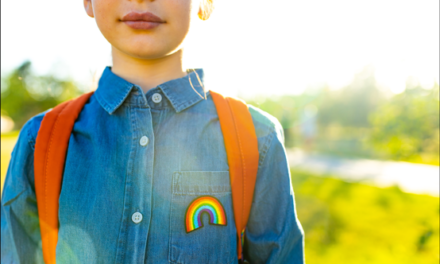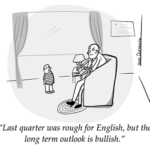National holidays are a special part of American culture. They shape our view of the yearly calendar. We plan trips around holidays. We make time for loved ones we see far too infrequently. You might get a day off from work. Kids stay home from school.
However, what if we celebrated a holiday that was not a day of closure, but a day of opening new possibilities? We can do so, I argue, by creating a federal holiday for local school board elections. Picture a day every year where people across the United States get the day off from work and school to take a trip to their neighborhood school, walk into the gymnasium, and cast a ballot for school board candidates and public referenda. Imagine what this holiday could mean for local democracy and public education. We could see exponentially more participation in local school board elections, which could completely change the dynamics of local education policy. This is the transformative power of School Board Election Day.
Fleshing out the design
How would School Board Election Day work? Think of January’s Martin Luther King Jr. Day, originally observed as a federal holiday in 1986. Sen. Harris Wofford (PA) and the late great Rep. (and my former boss) John Lewis (GA) co-authored the King Holiday and Service Act, which President Bill Clinton signed into law in 1994. Since the mid-1990s, the federal holiday has been a time to engage in community service projects. AmeriCorps, the federal government’s premier community service agency, takes the lead in organizing service activities for the public.
School Board Election Day could work in a similar way. Congress and the president could designate a single day for education democracy. Governors and state legislatures also would pass laws at the state level recognizing this day. With both state and federal agreement to observe the holiday, state and federal employees could receive a day off with pay. Ideally, that day would be somewhat distant from the first Tuesday after the first Monday in November (when federal elections take place). This would distinguish the school board elections from national politics.
Unlike the Election Day in November, School Board Election Day would be set aside to contribute to education democracy. Thus, the elections themselves would be held in schools as much as possible. Volunteers will need to ensure that school facilities are in operation for voters to come in and cast ballots. And, much like in November, community members will have to serve as poll workers.
The day also should be about more than the school board elections. There should be school improvement activities happening. This would be a day for fixing or rebuilding a dilapidated school playground. People could redecorate hallways and write special messages to remind our kids how special they are. They could hold forums for civic and political leaders to engage in discussions with parents and students on how to continue making progress. It would be a day of active reflection and action planning.
Election day holidays in the works
If the School Board Election Day holiday seems hard to imagine, know that this is far from the first time someone has circulated the idea of an election holiday. In 2005, Michigan congressman Rep. John Conyers authored H.R. 63, which was sent to the U.S. House of Representatives aiming to make the November Election Day a national holiday called Democracy Day. The proposal died in the House Government Reform Committee, but the idea has lived on. On the Senate side, Bernie Sanders (VT) reintroduced the bill in 2014 and again in 2018. Both times, the bill died in the Senate Judiciary Committee.
The lack of federal legislative success overshadows long-standing accomplishments at the state level. As of now, more than a third of all U.S. states have some version of an election holiday. Many of the laws have been in place for years. For instance, Kentucky has recognized Presidential Election Day as a state holiday since 1992. Interestingly, Wisconsin passed legislation in 1973 that established a holiday for municipal elections. School Board Election Day is not as unrealistic as it may seem.
The potential impact
For School Board Election Day to be a success, it needs to raise voter participation rates in a significant way. The bar for accomplishing this is already extremely low. The current level of school board election turnout is arguably one of the biggest indictments on American democracy. A study from the National School Boards Association estimates that the average voter turnout rate in school board elections sits at 5% to 10% of a school district’s electorate (Cai, 2020). Even a small increase in participation would be a tremendous improvement.
So, will a school board election holiday raise turnout above these horrifyingly low levels? The answer is a speculative “yes.” Ample political science research makes it clear that school board election turnout increases when they are held concurrent with federal elections (Anzia, 2013; Berry & Gersen, 2010; Collins, Lucero, & Trounstine, 2020; Hajnal, Kogan, & Markarian, 2022; Hajnal & Trounstine, 2005; Marschall & Lappie, 2018). The primary argument against concurrent elections is that aligning these elections forces candidates at all levels to compete for attention on the campaign trail. How can school board and city council members afford to run campaign ads on television when the better-resourced national campaigns are soaking up all the airtime? It’s a real concern.
A School Board Election Day delivers the good without the bad. Aligning school board contests nationally would generate attention across the country for the issues schools are facing. But because the board elections have a dedicated day, the period leading up to the holiday would give candidates clear campaign terrain.
Aligning school board elections across the U.S. improves our ability to study and evaluate school boards. As I noted earlier, estimates of school board election turnout exist. However, these estimates are incredibly unreliable because of how fragmented the timing of the elections are. In our current system, school board elections happen all the time, in both even and odd years and on different dates. This immense variation makes it impossible to know how participatory school board elections in America truly are. National alignment can allow us to collect more reliable data.
The beauty of knowing
Our overcomplicated, patchwork system of school board elections keeps us from knowing exactly who is helping determine their outcomes. In elections that vary so widely in dates and voter turnout, it is impossible to systematically collect data from across districts about what portion of the electorate is making these crucial decisions.
A School Board Election Day won’t fix the entire system. A voting holiday won’t teach kids math or how to read or even basic civics knowledge. It may further empower special interests. Some political scientists are even skeptical as to whether an election holiday will raise voter turnout. For instance, Dennis Thompson (2004) writes, “Because most people who are registered already go to the polls on election day, making election day a national holiday is not likely to increase turnout” (p. 58). However, setting aside a special day does make school board elections more visible, which should increase the public’s interest in participating. Furthermore, school board elections have a clear policy significance that federal, state, and even most other local elections lack. The public wants a way to “fix America’s schools,” and school board elections give them an opportunity to make their wishes known.
The opportunity for collective action is incredibly important. Although skeptical about the effect of an election holiday on turnout, Thompson concedes that “holding the election on a national holiday strengthens the sense of participation in a shared civic activity” (p. 58). The operative word is “shared.” School board elections need to be a shared national interest. We collectively acknowledge that education is the key to so many important societal goals. Education determines the composition and skills of the workforce and the development of new technologies. Education determines whether we have citizens prepared to function in a democracy. Education is the tool we use to learn to live together, despite our many differences.
Good schools benefit us all. Why not establish a holiday dedicated to holding school leaders accountable?
References
Anzia, S.F. (2013). Timing and turnout: How off-cycle elections favor organized groups. University of Chicago Press.
Berry, C.R. & Gersen, J.E. (2010). The timing of elections. The University of Chicago Law Review, 37-64.
Cai, J. (2020, April). The public’s voice: Uncontested candidates and low voter turnout are concerns in board elections. American School Board Journal.
Collins, J., Lucero, E., & Trounstine, J. (2020). Will concurrent elections reshape the electorate? California Journal of Politics and Policy, 12 (1).
Hajnal, Z. & Trounstine, J. (2005). Where turnout matters: The consequences of uneven turnout in city politics. The Journal of Politics, 67 (2), 515-535.
Hajnal, Z.L., Kogan, V., & Markarian, G.A. (2022). Who votes: City election timing and voter composition. American Political Science Review, 116 (1), 374-383.
Marschall, M. & Lappie, J. (2018). Turnout in local elections: Is timing really everything? Election Law Journal: Rules, Politics, and Policy, 17 (3), 221-233.
Thompson, D.F. (2004). Election time: Normative implications of temporal properties of the electoral process in the United States. American Political Science Review, 98 (1), 51-63.
This article appears in the March 2024 issue of Kappan, Vol. 105, No. 6, p. 60-61.
ABOUT THE AUTHOR

Jonathan E. Collins
Jonathan E. Collins is an assistant professor of political science and education and the associate director of the Columbia University Center for Educational Equity, both at the Teachers College, Columbia University, NY.

